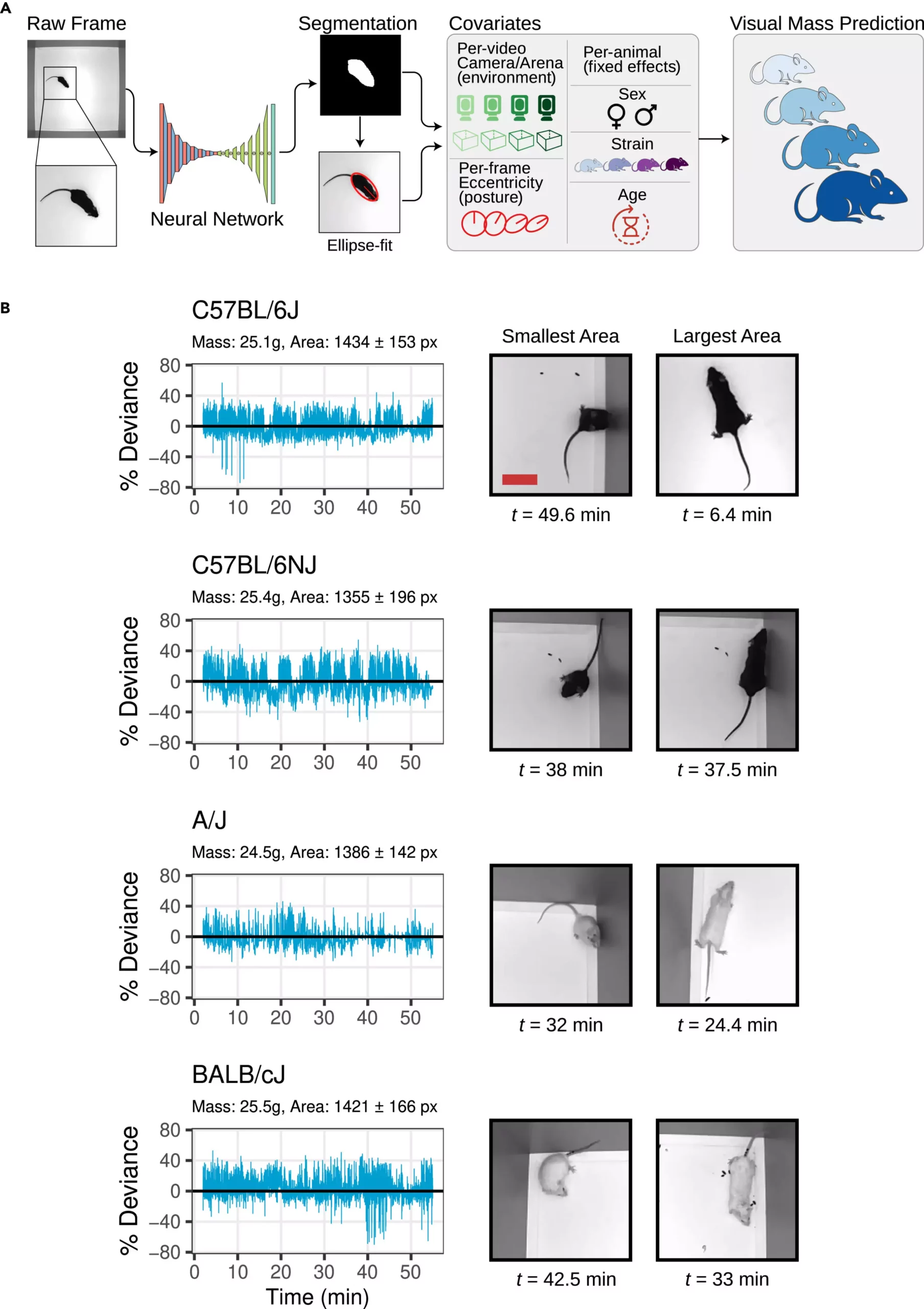Recent research conducted by Jackson Laboratory (JAX) Associate Professor Vivek Kumar, Ph.D., has introduced an innovative approach to measuring mouse body mass using computer vision technology. This non-intrusive method aims to reduce the stress associated with traditional weighing techniques while improving the accuracy and reproducibility of biomedical research involving mice.
Traditionally, researchers have had to remove mice from their cages and place them on a scale to measure their body mass. This process is not only stressful for the animals but also introduces variables that can impact the outcome of experiments. Additionally, these measurements are typically taken infrequently, further complicating the reliability and validity of the data collected.
To address these challenges, Kumar and his team of computational scientists and software engineers turned to computer vision technology. By analyzing a large dataset of mouse videos, they were able to develop a method that calculates body mass with less than 5% error. This new approach promises to enhance the quality of preclinical studies by providing researchers with a more accurate and non-invasive way to measure body mass over time.
Developing this method was not without its challenges. Unlike the relatively static subjects used in industrial farming, mice are highly active and flexible creatures that frequently change posture and shape. The team also worked with a diverse range of mouse strains, each with unique sizes, behaviors, and coat colors, requiring the use of multiple visual metrics, machine learning tools, and statistical modeling to ensure accuracy.
The new method offers several key advantages for researchers. It allows for the detection of small but significant changes in body mass over multiple days, which is crucial for studies involving drug or genetic manipulations. Additionally, the method has the potential to serve as a diagnostic tool for general health monitoring and can be adapted to different experimental environments and other organisms in the future.
The development of this non-intrusive method for measuring mouse body mass represents a significant advancement in the field of biomedical research. By utilizing computer vision technology, researchers now have access to a more accurate, reliable, and stress-free way to assess the body mass of mice over time. This new method has the potential to enhance the quality and reproducibility of preclinical studies, leading to new insights and discoveries in the field of biomedicine.


Leave a Reply
You must be logged in to post a comment.